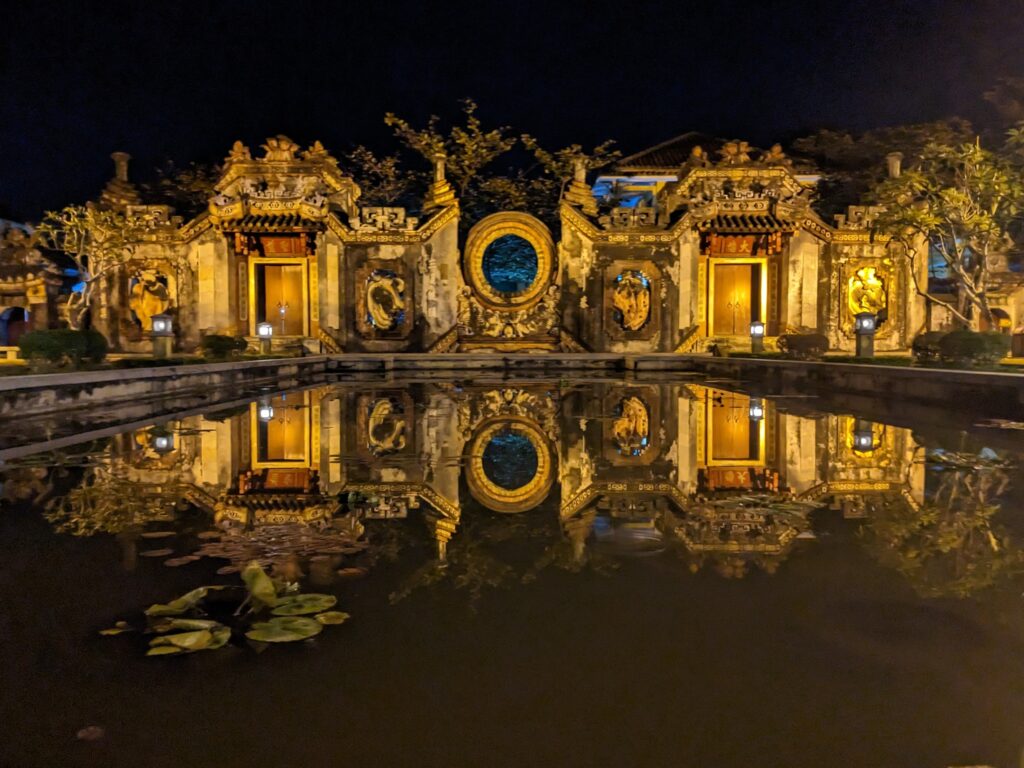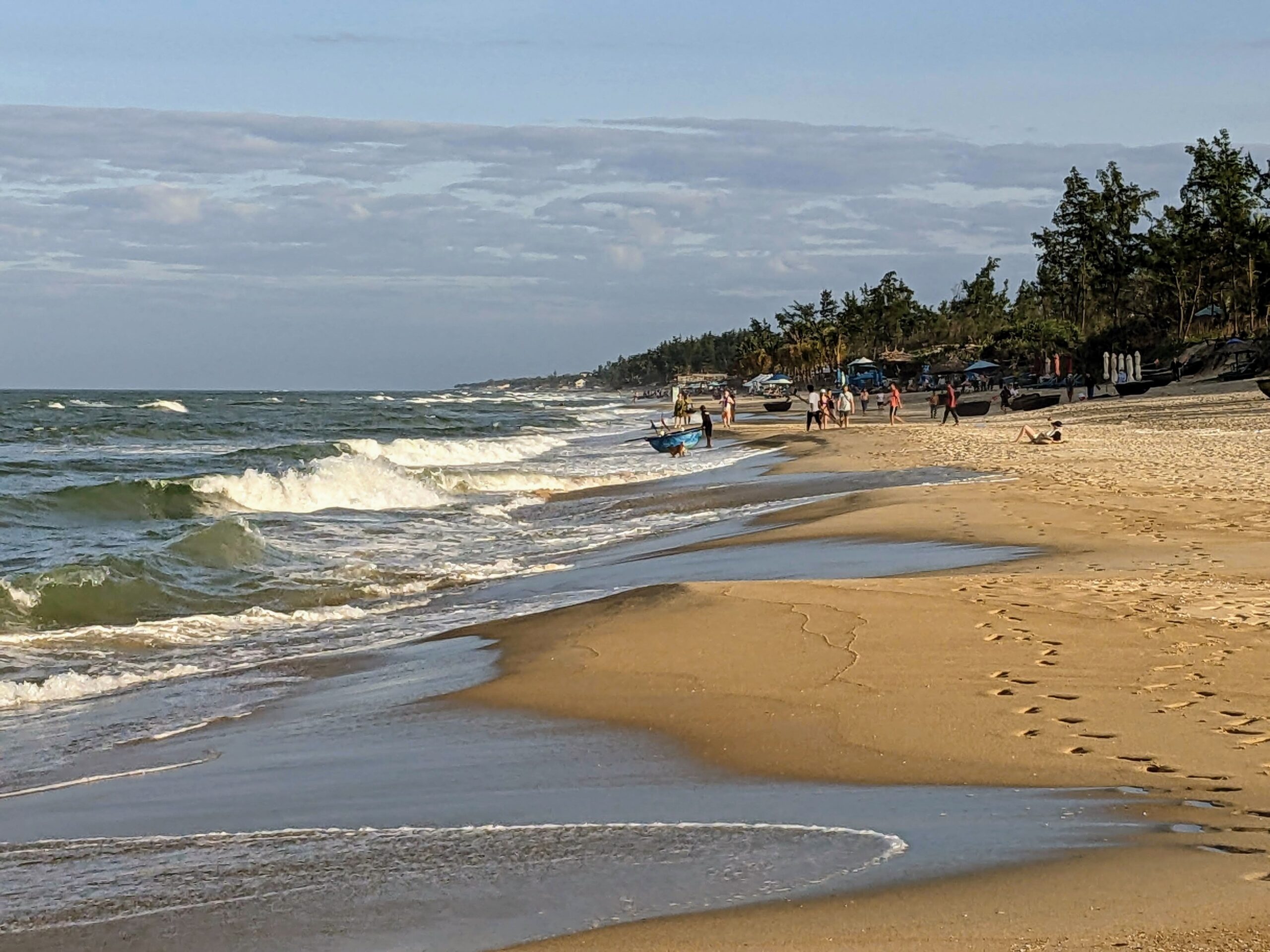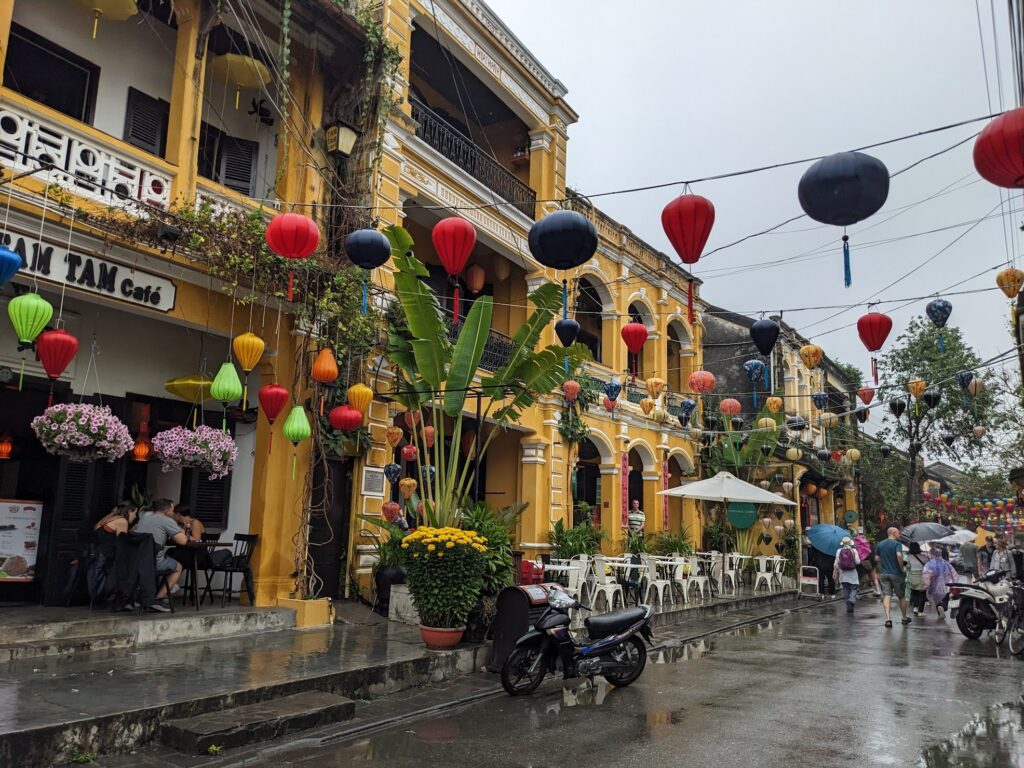The next stop on our journey south was the idyllic fishing village of An Bàng, located just a stone’s throw from the historic town of Hội An on Vietnam’s central coast.
The train ride from Huế to Đà Nẵng (An Bàng’s nearest train station) is widely regarded as one of the most spectacular sections of Vietnam’s North-South Reunification Express.



The route heads across lush fields and rice paddies before steadily climbing 500m in elevation to reach the Hải Vân pass, set out on a peninsula in the South China Sea. As the train crawls its way around the peninsula, the single track is squeezed between a rock face on one side and a vertical drop to the sea on the other. It certainly wasn’t the fastest route to Đà Nẵng, but it’s got to be the most scenic.

From Đà Nẵng station, the four of us crammed ourselves into a taxi to cover the remaining 25 km to An Bàng. We were delighted to find that the low-key vibe hadn’t changed from our last visit in 2014. There were just enough restaurants at the southwestern end of the village, where we were staying, to provide a bit of variety.


The beach itself was also pretty quiet, with about as many local fishermen as tourists sharing a narrow strip of white sand. Somehow, An Bàng still seems to hit the sweet spot between zero tourist infrastructure and becoming overrun.
A key reason for us returning to the region was a noodle dish called Cao lầu, which has haunted Sara’s dreams for the last nine years. Cao lầu consists of a bowl of roasted char siu pork, fresh mint and greens, sliced cucumber and flat noodles, sitting in a small amount of broth and topped with a teaspoon of chilli sauce, a slice of lime and crispy noodle-dough crackers. Crucially, the noodles are made from rice soaked in lye water (which is made using ash of local plants and water taken from a specific well in Hội An), giving them a unique springy texture and satisfying bite. However, this also means that Cao lầu can’t be found anywhere else in Vietnam, let alone the UK. To make up for this, we ate Cao lầu on each of three days we stayed in An Bàng, and weren’t even close to getting sick of it by the time we left.
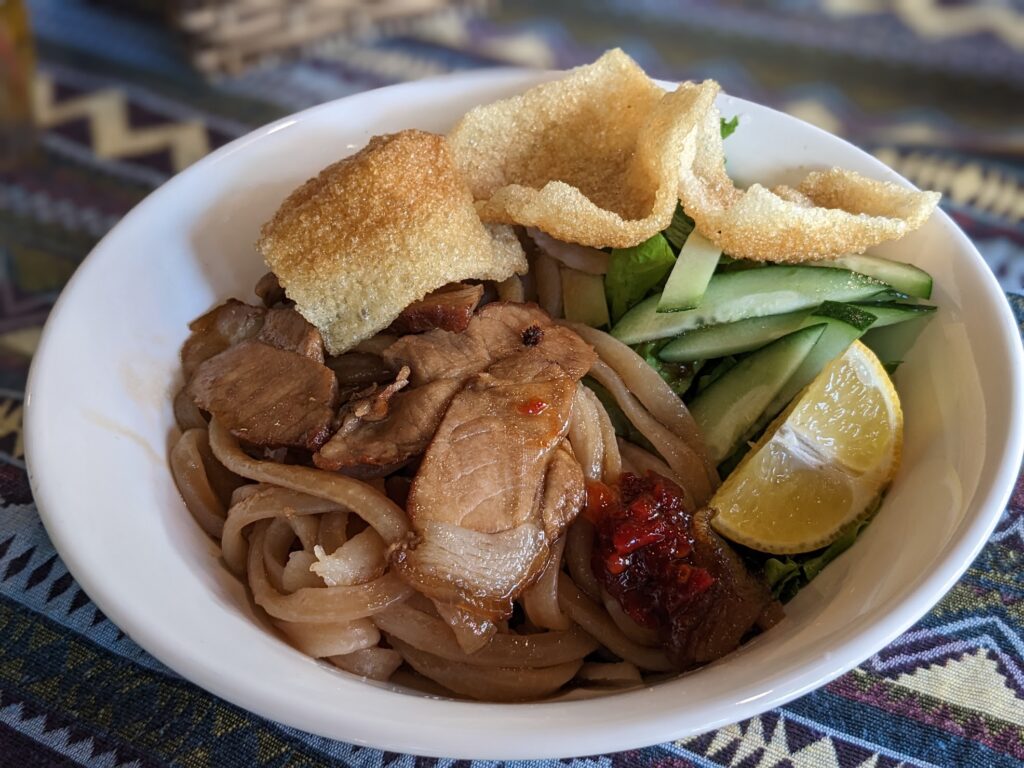
An Bàng is just a short cycle from Hội An, surely Vietnam’s most Instagrammable town. Our route took us through the Tra Que Vegetable Village, a beautiful (and very tourist friendly) farming area located halfway between the two towns. We enjoyed cycling along the narrow paths between rows of lettuces, mint, basil, coriander and countless other herbs and flowers. However, the heavens opened just as we exited the village, and we were forced to temporarily abandon our bikes and shelter under our umbrellas until the worst had passed.



We later bent our route through the countryside of Cẩm Thanh, along a network of dirt tracks between beautifully green rice paddies and palm forests.
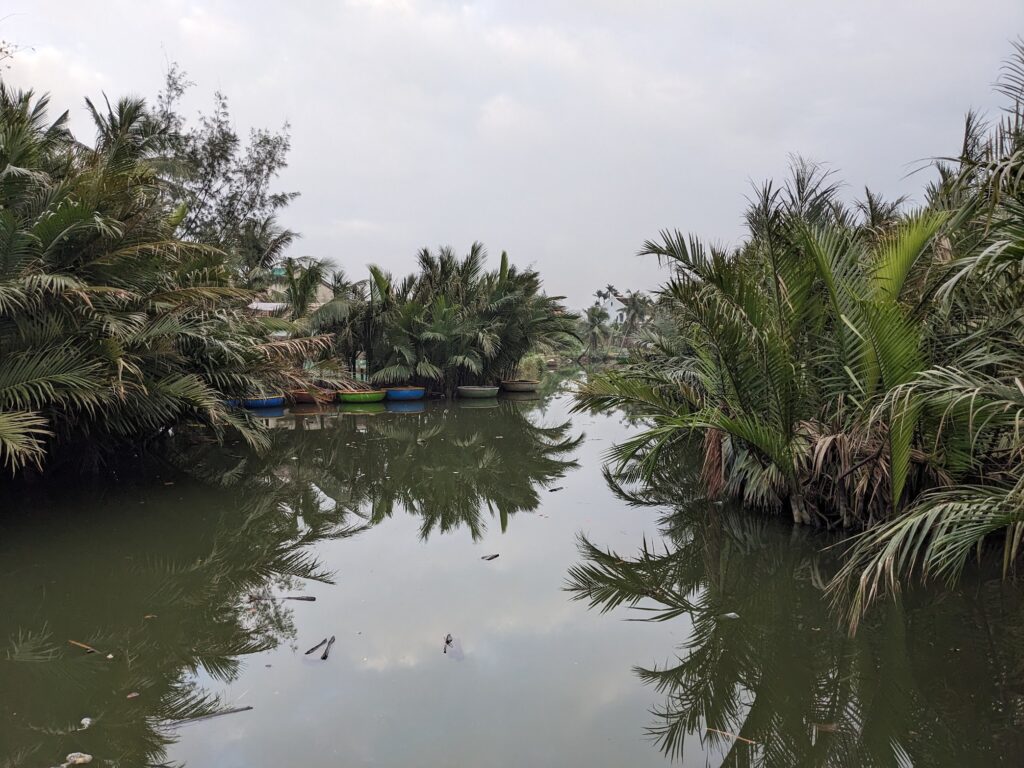
On any other day, I’m sure Hội An’s ochre-walled French-colonial buildings would have been a feast for the eyes, but the day’s grey skies meant that we didn’t see the town at its most splendid. Still, after dark the Thu Bồn River is illuminated by hundreds of multicoloured lanterns, which more than made up for the daytime weather.
While walking through Hội An’s market that afternoon, we could hear a great commotion coming from the river. When we reached the riverbank, we found nine boats of eight rowers each racing up and down the water. Through some quick Internet research, we learned that this boat race is held annually to celebrate the lunar new year, and that each boat represents a different ward of Hội An. Despite the miserable weather, it seemed like half the town had come out to cheer on their respective ward, using cooking pots and utensils to make as much noise as possible. We had no idea that our visit to Hội An was going to coincide with this boat race, so felt very fortunate to be able to witness this local tradition.
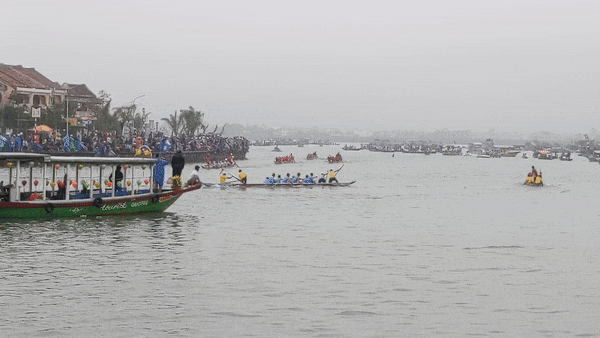
But as often seems to be the case in the Vietnam, it was the food that was once again our highlight. We had fond memories of eating a mountain of delicious but baffling rice-paper rolls down a dark alley on the outskirts of Hội An, and so we were keen to drag Helen & Mick with us on our return. While the Bale Well Restaurant has since expanded into a huge garden adjacent to the original alley (which is by no means dark and hidden any longer), thankfully the food was exactly as we remembered.
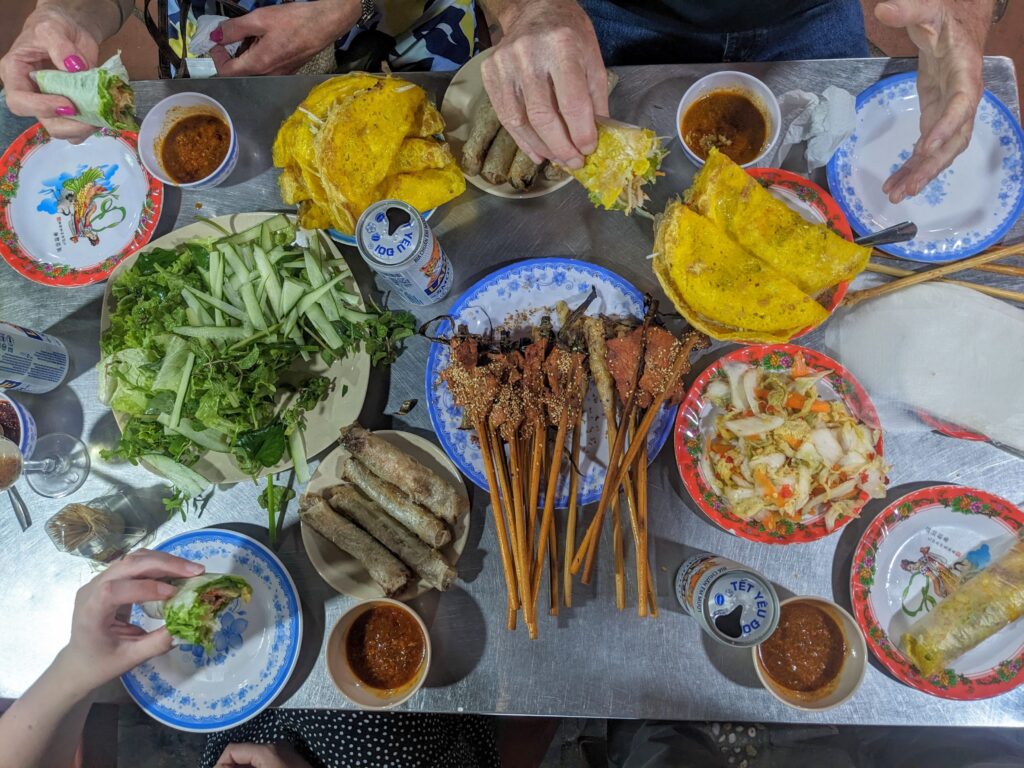
Constructing the perfect roll was a little anxiety inducing, especially considering how closely we were being watched by the staff who didn’t hesitate to intervene when we inevitably got things wrong. Thankfully, they picked Mick as their main victim and so Helen, Sara and I were mostly left alone! After a couple of demonstrations and corrections, we learned to follow these steps:
- Take two sheets of rice paper, overlap them slightly and lay them in the palm of your hand
- Add either a deep fried spring roll or an unravelled yellow rice flour pancake
- Arrange an assortment of fresh herbs, cucumber and pickled cabbage on top
- Add a skewer of barbecued pork
- Roll the whole thing up (assuming you haven’t overstuffed it) and grip it just firmly enough so that you can pull the barbequed pork from its skewer
- Mix the satay sauce with your desired level of chilli sauce, dip the roll, and consume
- Wash down with a chilled Larue beer
This really felt like Vietnamese cuisine at its finest.
After a relaxing few days in An Bàng, it was time to move on to something quite different. Our next destination would be Đà Lạt, the temperate mountain retreat favoured by French colonists.
